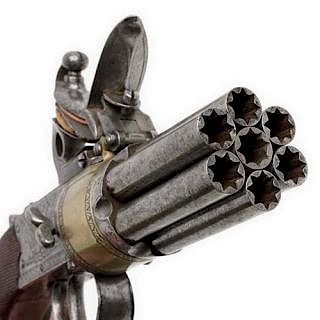Important "Custer Range" U.S. Springfield Trapdoor Carbine
About Seller
6270 Este Ave.
Cincinnati , OH 45232
United States
With offices in Cincinnati, Cleveland and Denver, Cowan’s holds over 40 auctions each year, with annual sales exceeding $16M. We reach buyers around the globe, and take pride in our reputation for integrity, customer service and great results. A full-service house, Cowan’s Auctions specializes in Am...Read more
Two ways to bid:
- Leave a max absentee bid and the platform will bid on your behalf up to your maximum bid during the live auction.
- Bid live during the auction and your bids will be submitted real-time to the auctioneer.
Bid Increments
| Price | Bid Increment |
|---|---|
| $0 | $25 |
| $500 | $50 |
| $1,000 | $100 |
| $2,000 | $250 |
| $5,000 | $500 |
| $10,000 | $1,000 |
| $20,000 | $2,500 |
| $50,000 | $5,000 |
| $100,000 | $10,000 |
About Auction
Nov 4, 2015 - Nov 7, 2015
Cowan's Auctions dawnie@cowans.com
- Lot Description
Important "Custer Range" U.S. Springfield Trapdoor Carbine
.45-70 caliber, 22" barrel, S/N 19657. Blued finish, long wrist wood stock, high arch breechblock. Single barrel band with stacking swivel. Lockplate marked "U.S. Springfield 1873" with spread eagle; top of breechblock marked with "Model 1873" over an eagle head and crossed arrows over "U.S."This early First Model '73 carbine is in overall good to very good condition showing classic heavy dark uncleaned patina to metal surfaces. Crisp action, very good markings. Heavily weathered wood stock with scattered dings, mars and age cracking along grain lines that do not compromise the integrity of the stock; saddle ring has been removed.Condition
Importantly, accompanying this lot is a binder of information compiled by the consignor including a framed note printed on heavy rag parchment found rolled up in the barrel stating "History: This rifle was found on the Custer battlefield, Montana (Battle of the Little Big Horn) after the battle, June 26, 1876 by 'Wrapped Hair' a member of the Northern Cheyenne Tribe of Indians, participants in this battle. It was purchased from him by Edgar Weber, at the time a Clerk at the Tongue River Indian Agency, Lame Deer, Montana, in the year 1918.(Signed) Edgar Weber/dated April 11, 1966/Portland, Oregon."
Also in the file are copies of various letters and articles related to other guns in this serial number range that have been in one way or another associated with The Custer Fight and with other Indian capture '73 trapdoor carbines. Also included are correspondences regarding the search for information on a warrior with the name of "Wrapped Hair." There is much controversy concerning 7th Cavalry weaponry and guns possibly used at one of the nation's most remembered battles of the Indian Wars period (by both sides in the conflict). According to Flayderman's Guide to Antique American Firearms (9A-364) and other resources.
'73 trapdoor carbines serial numbered before approximately 43,700 stand a chance of having been in the battle. It is likewise known that guns in the range from 1-43,700 were issued to other U.S. Cavalry Regiments including the 2nd Cavalry. The consignor's notes mention S/N 19573 as being a carbine that tested positive in a forensic evaluation of fired cartridge cases recovered from the Little Big horn battlefield. Per noted Custer expert, the late John DuMont's book Custer Battle Guns, Springfield Trapdoor Model 1873 carbine S/N 19714 is recorded as being in the Springfield Armory Museum display and said to have been in the Custer battle (p. 81; 1988 edition). This Springfield certainly has the look of a possible Indian capture gun. Ex-Marvin Lintz collection to our consignor. - Shipping Info
-
SHIPPING. At the request of the buyer, Cowan's will authorize the shipment of purchased items. Shipments usually occur within two weeks after payment has been received. Shipment is generally made via UPS Ground service. Unless buyer gives special instructions, the shipping method shall be at the sole discretion of Cowan's Auctions, Inc.. Cowan's is in no way responsible for the acts or omissions of independent handlers, packers or shippers of purchased items or for any loss, damage or delay from the packing or shipping of any property.
-
- Buyer's Premium



 EUR
EUR CAD
CAD AUD
AUD GBP
GBP MXN
MXN HKD
HKD CNY
CNY MYR
MYR SEK
SEK SGD
SGD CHF
CHF THB
THB

















